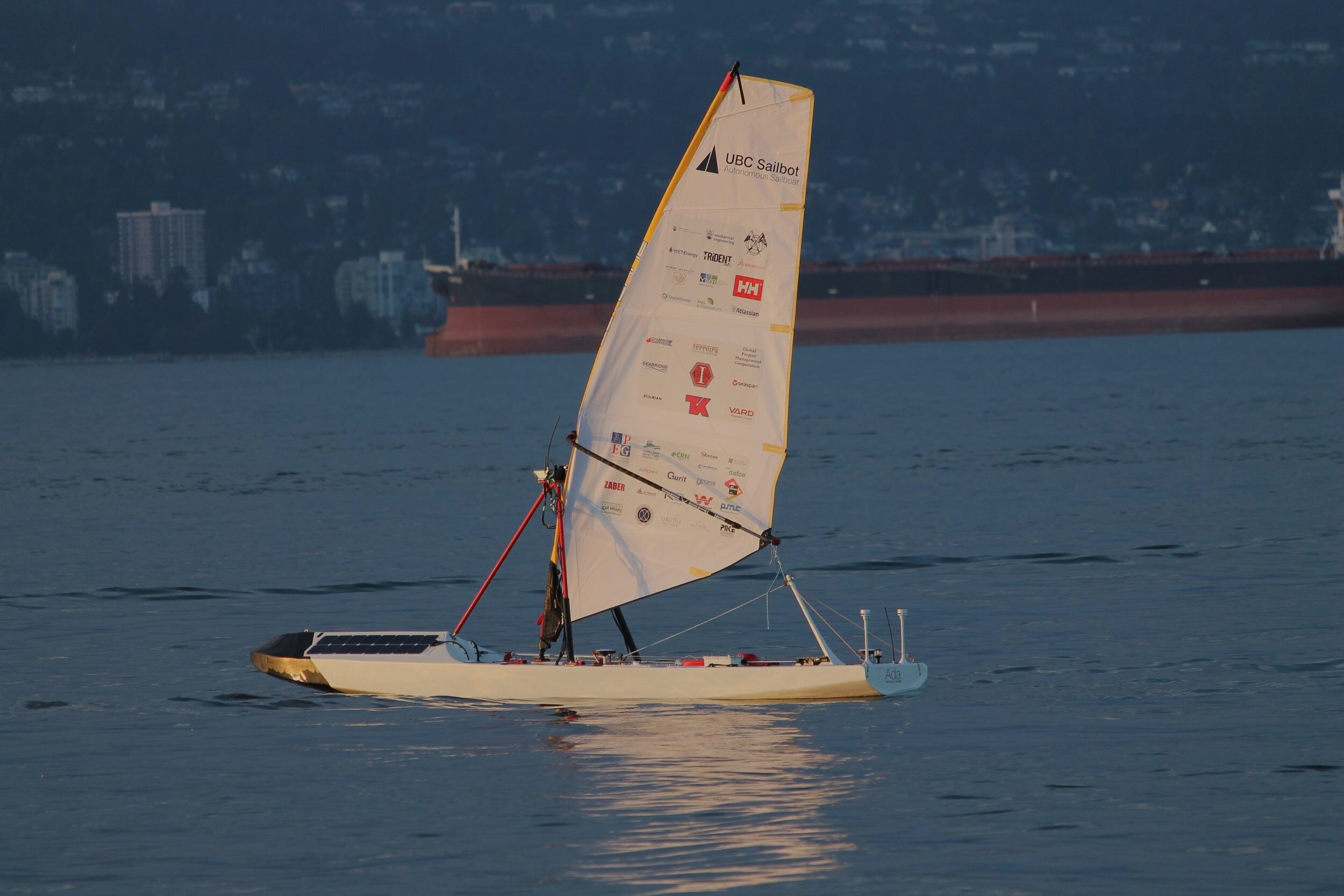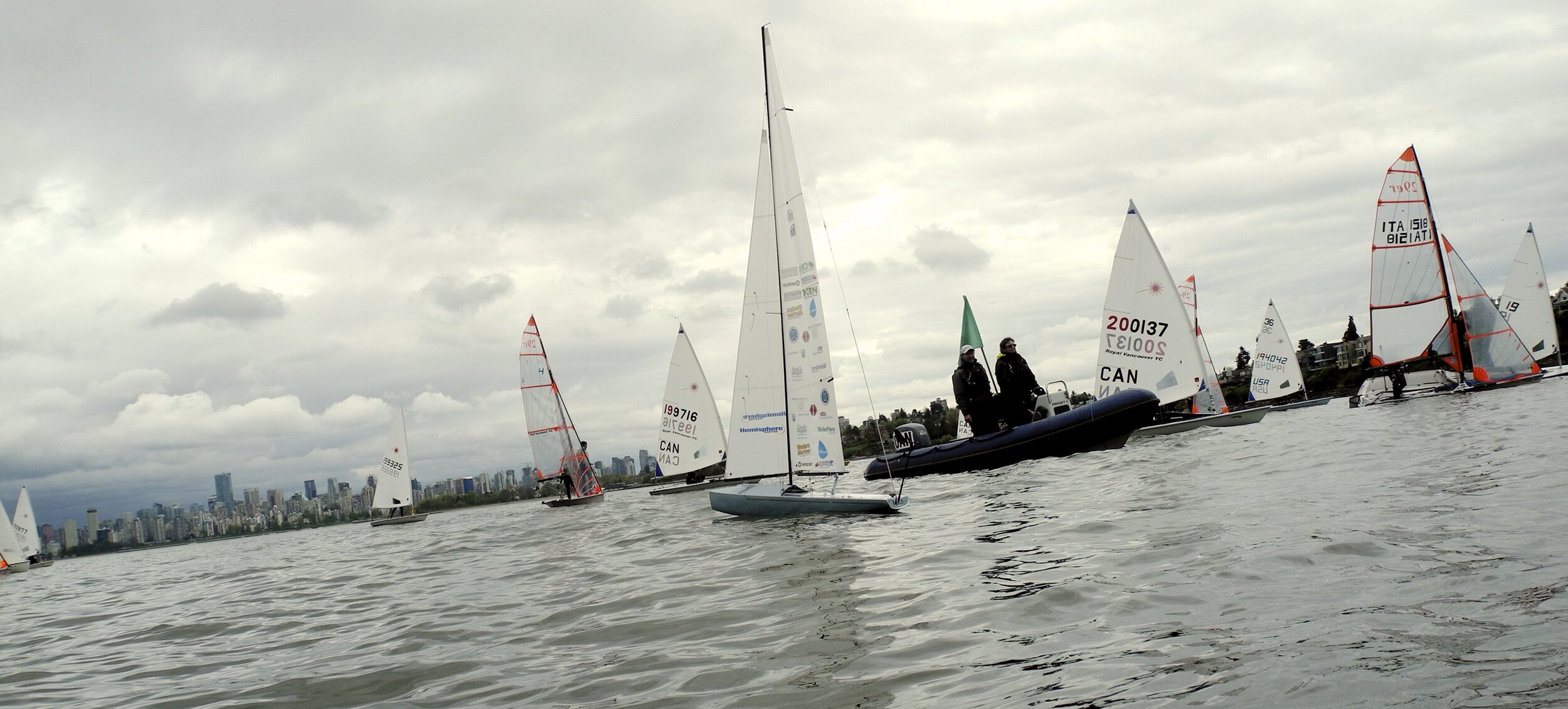
PROJECTS
Meet our autonomous sailboats
Raye
2016 - 2023
After launching Ada on her journey across the Atlantic, the team quickly began work on our second large-scale, fully autonomous sailboat, named Raye. We have taken in what we learned from designing, building, and sailing Ada to iterate our design with most components being completely redesigned, including:
18ft carbon fiber hull inspired by Volvo 60 class hulls
Dual skeg hung rudders with non-backdrivable drivetrain
Custom sloop rigging with winches for autonomous control
Universal CAN Communication Modules (UCCM)
New local and global path planning algorithms
Integrated solar-powered Battery System
Raye is named after the late Raye Montague (1935-2018), who was a naval architect credited as the first person to use a computer program to generate a rough draft of a ship. Throughout her career she demonstrated incredible innovation and persistence, and received numerous honours for her accomplishments in the fields of naval architecture, engineering, and computer graphics.
Snapshot 1 (October 2017)
Construction of our Datalogger, a self-contained unit used for gathering boat speed/movement for characterization.
Snapshot 2 (March 2018)
Outdoor testing of our Solara solar panels, along with other power system components.
Snapshot 3 (August 2019)
Internal Layup of our carbon fibre layer along our Corecell hull, with three layers in 0, 45, 90 degree orientations.
Snapshot 4 (June 2021)
Raye at the paint shop after months of fairing and smoothing the hull.
Snapshot 5 (August 2021)
Electrical and mechanical development such as internal wiring and deck component installation.
Snapshot 6 (March 2022)
Software testing of the rudders in the water.

Ada
2014 - 2016
After considerable success competing in the IRSR, the team focused on a new challenge with a larger project. The Trans-Atlantic challenge is a standing challenge for autonomous vessels to cross the Atlantic without any human assistance or feedback. To attempt this, the team designed and built Ada, a 5.5m long autonomous vessel. Ada was uniquely canoe shaped and used a windsurfing rig for propulsion. This design was intended to heel over and shed wind in poor conditions to protect her in the harsh weather of the North Atlantic. Fitted with solar panels to supplement energy, Ada was designed to sail the 3,000km+ journey from Newfoundland to Ireland.
On August 21, 2016, the team launched Ada on her Trans-Atlantic journey. She made record pace in the first three days, but unfortunately encountered a mechanical failure about 700km into her journey. Floating uncontrollably, she drifted through storms and hurricanes before going offline near the Azores islands on November 14, 2016.
Over a year later in December 2017, the research vessel RV Neil Armstrong miraculously came across Ada floating 200km off the coast of Florida. They were well equipped to retrieve her and she accompanied the crew back on their journey to Massachusetts, USA. Although she had been de-masted, lost many of her on-board components, and sustained punctures to her deck, she was still floating upright at her designed waterline. Below the water, her hull, keel, and rudder were all in good shape, with the only noticeable wear being algae buildup. Upon her return to UBC, the team completed a full teardown to learn what worked well and what didn’t, gaining valuable knowledge for the design of the next trans-oceanic vessel.
Snapshot 1 (October 11, 2014)
Our team taking a big step with Ada’s internal carbon fibre layup.
Snapshot 2 (June 17, 2015)
Ada’s final checkup before being sent to the paint shop.
Snapshot 3 (August 18, 2016)
Ada performing final tests before her ultimate journey at St John’s, Newfoundland, Canada.
Snapshot 4 (February 27, 2018)
Team analysis of Ada at UBC after her delivery from her Atlantic journey.

Thunderbird
2009 - 2014
In 2004 students from the University of British Columbia demonstrated as part of a fourth-year design project that an autonomous sailboat was possible. Based on their work the SailBot Class rules were developed for friendly competition among university teams. The first IRSR was held in 2006. The basic concept of the event is to build a 2 meter long boat which can sail robotically by making its own on-board decisions about sail trim and course direction without human assistance.
Competitions have been held in Canada and the United States. In 2012, the IRSR was hosted in Vancouver, BC, Canada. UBC Sailbot won the 2012 event with their vessel ‘Thunderbird’. This began a three-year-long streak of wins for the team and Thunderbird. In June 2013, the team brought an improved Thunderbird to the event in Gloucester, MA, and won with a perfect score. This was followed up by a third victory and second consecutive perfect score in San Francisco at a 2014 event.
From this initial journey, we began to explore greater challenges, and this was where Ada came to fruition.
Snapshot 1 (2012)
Premier of Thunderbird in False Creek, Vancouver, Canada (Source: UBC NAME).
Snapshot 2 (2013)
Thunderbird among other autonomous “sailbots”.
Snapshot 3 (June 8, 2014)
Thunderbird at our very last participation in the International Robotic Sailing Regatta (IRSR) in 2014.












